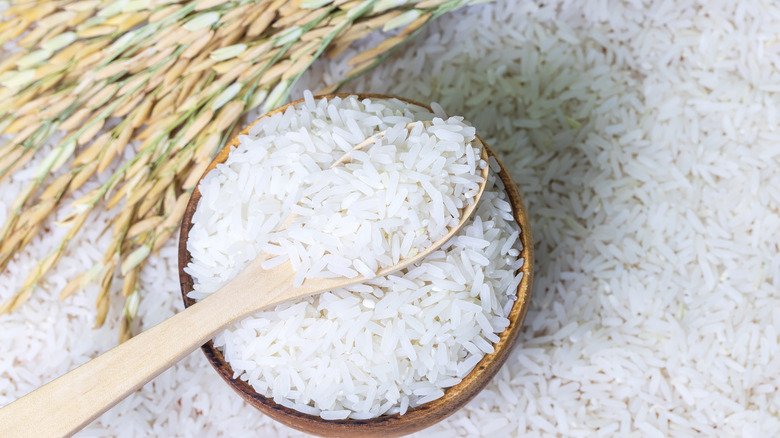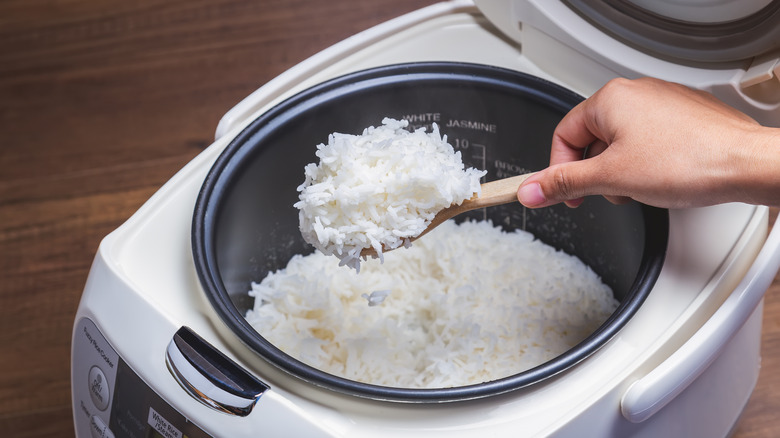How Much Rice Does The Average American Actually Eat?
With more than half of the people in the world relying primarily on rice for their diets, according to the USDA, it's obvious that a lot of the grain needs to be grown to feed the world's population. In 2021-22, the world's people consumed 509.87 million metric tons of rice, which was an increase of about 72.69 million tons compared to the 2008-09 crop, reports Statista.
While images of plateaued rice paddies in Asia may first come to mind when thinking about how the grain is grown, in fact, the United States produces about 20 billon pounds of the grain every year, according to Think Rice. Of the rice grown in the United States, about half of it remains here, while the rest is exported to around 120 countries. Rice production is concentrated in six states: Arkansas, California, Louisiana, Mississippi, Missouri, and Texas. Long grain rice is the most abundant in American rice paddies, according to the USDA, which can easily be incorporated into a wide range of recipes.
Although rice is grown in the United States, it is also imported. The USDA says the U.S. primarily brings aromatic rice varieties here from other countries, such as jasmine and basmati. But how much rice do Americans actually eat?
A growing food staple
With a wide range of recipes available for rice (and for every meal and taste palate), rice has become an American pantry staple. Not surprisingly, Americans love rice-based dishes and consume more than 20 pounds of the grain each year, per Food & Wine. In total, Americans ate about 4.6 million metric tons during the 2021-22 fiscal year, reports Statista.
That number pales in comparison, however, to two of the world's top consumers of rice (China and India) eating about 258.4 million metric tons. In Asia where rice is an integral part of the diet, an average person eats about 220 pounds each year (via Eco-Business).
While still not anywhere near as close to Asia's numbers for rice consumption, Americans are expected to eat more as the country's ethnic composition continues to evolve, according to the USDA. Also contributing factors are new rice-based and other products that meet diverse dietary plans.

